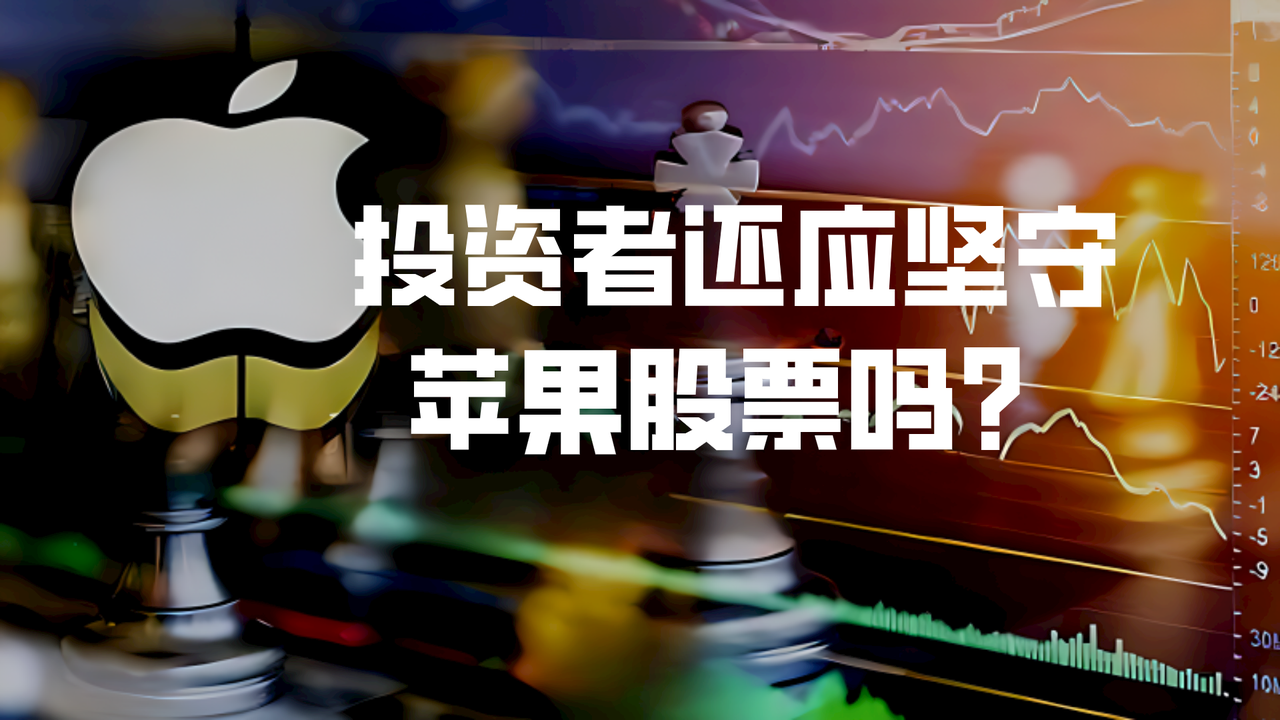- Remittance
- Exchange Rate
- Stock
- Events
- EasyCard
- More
- Download
- 6th Ann

Apple Faces Major Setbacks at the Start of 2024: Can Apple Recover, and Should Investors Remain Opti
As a leader in the stock market, Apple faced a triple blow at the beginning of 2024, causing a significant decline in the NASDAQ index. Shockingly, in the first trading week of 2024, the total market value of global stocks and bonds evaporated by over $3 trillion, marking the worst start to a year in nearly two decades.
Apple not only faced downgrades by two major investment banks but also encountered a comprehensive antitrust lawsuit initiated by the U.S. Department of Justice against its market dominance. These events led to a substantial drop in Apple’s stock price, sparking deep concerns about its future. Is this the end for Apple, or just a temporary downturn? We will explore the deeper reasons behind this and assess Apple’s potential for recovery in 2024, as well as the risks and challenges it may face.
According to information obtained from the U.S. stock data platform StockWe.com, Wall Street investment institutions massively sold off Apple stock through dark pool trading. This action caused a sharp decline in Apple’s stock price. However, towards the end of the trading day, some institutions began buying the dip, pushing the stock price back up to around $181.

Analysis of the Causes Behind the Stock Price Plunge
Poor Market Prospects for iPhone 16
Despite the iPhone 16 not yet being released, Barclays Bank holds a pessimistic view of its market prospects. They believe that due to the underperformance of iPhone 15 sales in 2023, the iPhone 16 will struggle to attract consumers with significant performance upgrades. Therefore, Barclays predicts that iPhone 16 sales will face challenges in 2024. Additionally, they point out that the prolonged downturn in the consumer electronics sector could pose a significant challenge to Apple.
Sluggish Sales of iPhone 15, Intensified Competition
Data from Counterpoint shows that initial sales of the iPhone 15 dropped by 4.5%, with annual shipments reduced from the expected 80-90 million units to 78 million, a decline of about 8%. Particularly in the Chinese market, the iPhone 15 fared poorly, leading some scalpers to sell at a discount. More seriously, Apple’s competitors performed better. For example, in November, the activation of new Apple devices grew only by 2.2%, while Xiaomi and Huawei saw year-on-year increases of 44.1% and 75.6%, respectively. Additionally, the success of Huawei’s Mate 60 series in the Chinese market captured some market share, reflecting Chinese consumers’ preference for local brands. Therefore, Apple needs to adjust its product strategy flexibly in response to market changes.
High Inventory Levels
Apple’s inventory levels reached historic highs, reflecting overoptimism about the demand for iPhone 15. Excess inventory not only affects profit margins, as Apple may need to reduce prices by 10%-20% to clear stock, but also impacts liquidity and increases the risk of bad debts. High inventory levels lead to a deteriorating balance sheet, increased operating costs, and potential asset losses for Apple.
Growth in Services, Hardware Challenges
Weak iPhone sales and slow revenue growth in services like the App Store, Apple Music, and Apple TV+. The Vision Pro product is priced high and is not expected to bring significant new revenue. Although Apple’s stock price rose nearly 50% in 2023, its P/E ratio is high at 28 times, with four consecutive quarters of year-over-year revenue decline. Nevertheless, the services business still achieved 9% growth in the 2023 fiscal year, reaching annual revenue of $85.2 billion, becoming the only product category to achieve positive growth.

Can Apple Bounce Back in 2024?
Although 2023 was clearly not a good year for Apple and other electronics manufacturers, 2024 could be a year of recovery, when consumers may be more willing to spend on PCs and smartphones.
According to current forecasts, Apple’s earnings per share (EPS) for the 2024 fiscal year will reach $6.57, and $7.12 for the 2025 fiscal year, an 8% year-over-year increase. However, many analysts believe there is significant upside potential for Apple’s EPS, especially if these forecasts are realized.
In the 2023 fiscal year, Apple’s growth potential was noticeably suppressed by headwinds in the device market, leading to declines in iPhone, Mac, and tablet sales. Apple’s diluted EPS for the year was only $6.13, a mere 0.3% increase year-over-year. However, the EPS revision trend is positive, indicating upward potential in earnings estimates.
Apple’s stock is currently valued at a P/E ratio of 26.1, slightly above its average P/E ratio of 25.7 over the past year. In the long term, if the device market rebounds and consumer confidence improves, Apple’s P/E ratio could reach 30 times. At a 30x P/E ratio, its fair valuation would be around $214.
It’s worth noting that the company’s net profit has been struggling for the past decade until 2020. This might be due to scaling issues, and the company is working hard to improve operational efficiency due to already stringent processes. However, AI could also bring more growth in the profit arena if effectively implemented in areas like design, manufacturing, and services.
The slowdown in iPhone growth is worth investigating deeply, as it is the company’s core source of revenue. In Q4 of 2023, the company’s iPhone revenue actually set a record for the September quarter, indicating that even with declining annual revenue from Apple smartphones, the company could still continue to grow.

Should Investors Stick with Apple Stock?
Despite disappointing stock performance, Apple remains one of the most profitable companies in the U.S. Rumors suggest that Apple’s first mixed reality device, Vision Pro, priced at $3,500, will debut at the end of January. Well-known analyst Ming-Chi Kuo predicts that Vision Pro will ship about 500,000 units in 2024, potentially bringing new sales momentum for Apple products.
In fact, with a current market capitalization of $2.8 trillion, Apple still ranks among the world’s top companies, maintaining a leading position in technology and innovation. Its stock remains robust, with ample cash flow, solid fundamentals, and historically, it has been one of the most profitable tech stocks for shareholders in the U.S. stock market. For investors looking to hold Apple long-term, they can choose reputable brokers like Charles Schwab, a globally renowned investment brokerage. Opening an account with Charles Schwab also provides a bank account with the same name. You can deposit USDT into BiyaPay and then withdraw fiat currency to invest in U.S. stocks through Charles Schwab. BiyaPay is also authorized by the U.S. Securities and Exchange Commission, so if you are knowledgeable and confident about digital currencies, you can directly invest in U.S. stocks through BiyaPay.
Lastly, it’s advised to regularly monitor Apple’s future development plans and innovations, as well as the performance of its service business. At the same time, diversify your investment portfolio to reduce the risk associated with a single stock.

























